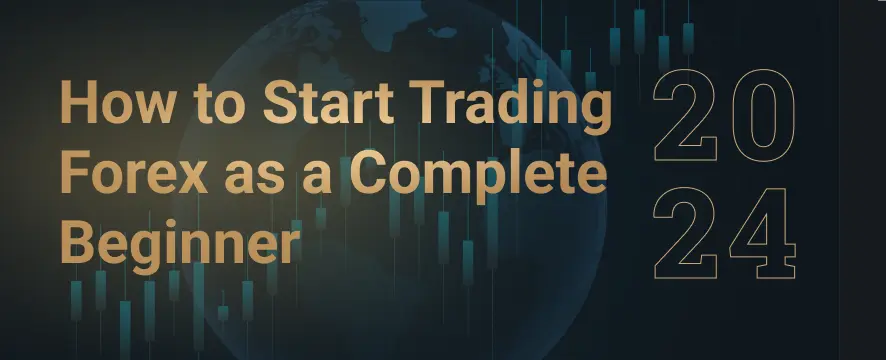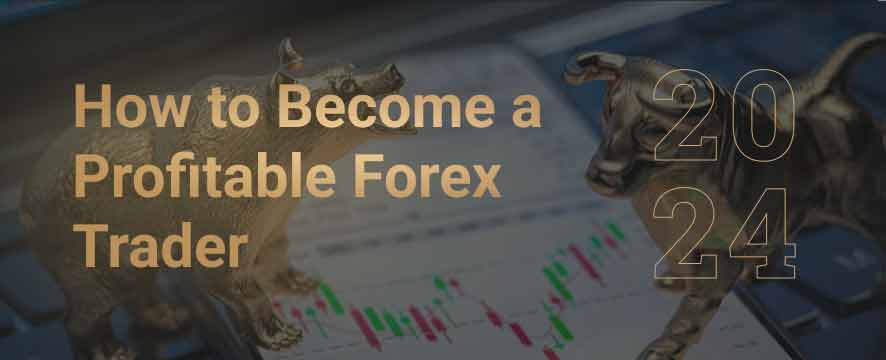7 min read
Share
Discover the essential types of Forex analysis: technical, fundamental, and sentiment. Learn how to combine them for effective trading strategies.

Introduction
Forex Trading is a fairly simple concept to understand: Traders bet on one currency relative to another in the hopes of making a profit.
However, the challenge is knowing which currencies to bet on and when. This is where Forex Trading Analysis plays a pivitol role.
Experienced Forex Traders understand that this is more than mere guesswork. Instead, knowing when to enter and exit trades and which currency pairs to trade is based on different types of Forex Trading Analysis.
We will cover the three main types of Forex Trading analysis in this article, namely:
• Technical Analysis
• Fundamental Analysis
• Sentiment Analysis
We will discuss what each type of Forex Trading analysis is and how they can be applied to Forex Trading.
Understanding Forex Analysis
Forex Trading Analysis is the art or ability to know which trades to enter and exit and when to enter and exit the trades.
The goal is to predict the movement of currency pairs as accurately as possible.
While there is no ‘sure-fire’ way to predict how a currency will move, Forex Trading Analysis seeks to take the ‘guesswork’ out of trading and make trades based on a high probability of success.
An experienced Forex Trader seeks to put the odds in their favor!
Technical, Fundamental, and Sentiment Analysis all have a role to play and should be used in conjunction with one another rather than in isolation.
When used in conjunction, all three types of analysis combine to create a well-rounded trading strategy.

The Three Types of Analysis in Forex
What exactly are the three types of analysis, and what role do they play in developing a well-rounded trading plan?
1. Technical Analysis
The term ‘technical analysis' is commonly used in Forex Trading, but what exactly is it?
Simply put, it is the analysis of Forex Market data, including price action and volume by using various tools to try and determine future price movements.
The central idea behind technical analysis is that historical market data gives clues about future price action.
The tools and data that Forex Traders look out for include the following:
• Charts
Forex Traders use tools such as line charts, bar graphs, and candlestick patterns to analyze price movements across differing time intervals. Each tool gives unique insights. For example, candlestick diagrams show the open, close, high, and low for given durations. This offers clues about the current prevailing mood of the market.
• Trends
Analyzing market trends is a key component of technical analysis. In simple terms, when a currency has continually increased in value over time, the trend is likely to continue. Likewise, when a currency has continued to move lower, there is a higher likelihood that this same trend will continue.
• Indicators
Indicators give an overview of the current state of the market and try to predict future price action. Common indicators include moving averages, Relative Strength Index (RSI), and Fibonacci retracements. However, it is important to remember that most indicators are based on price action.
• Patterns
Forex Traders look out for certain ‘patterns’ within price charts. These can include common patterns such as ‘head and shoulders’ or ‘double top/bottom.’ When observed, these patterns are often interpreted as indicators of upcoming price movement. These patterns serve as guidelines for Forex Traders on when to enter or exit positions.
2. Fundamental Analysis
Unlike technical analysis, fundamental analysis focuses more on the ‘real world’ happenings that can affect a currency.
Fundamental analysis essentially tries to ascertain or determine the health and well-being of a country, which in turn influences the value of the country’s currency.
Fundamental analysis involves closely monitoring the following:
• Economic Indicators
Key economic indicators, including GDP growth, employment figures, inflation stats, and interest rates, offer insights into a nation's economic health. For example, a high rate of GDP growth can be a sign of a robust economy, which could, in turn, strengthen the economy of the nation and attract more investors.
• Central Bank Policies
Decisions made by central banks can have a large bearing on influencing the value of a currency. These include things such as interest rate adjustments and changes to monetary policy. For example, when a central bank raises interest rates, it can draw more investors seeking higher yields, leading to an increased demand for the currency.
• Political Stability and Economic Performance
Nations with a stable political climate and a healthy economy are more appealing to international investors. Change in political leadership or adjusting economic strategies can severely impact investor sentiment, thereby affecting the strength of a nation’s currency.
• Global Events
Events such as geopolitical conflict, trade agreements, or global sanctions will influence the strength of currencies. It is absolutely vital for Forex Traders to keep abreast of the latest news, as one breaking news story can cause a massive shift in the strength of a currency.
3. Sentiment Analysis
The last common type of analysis used is sentiment analysis.
The goal of sentiment analysis is to try and gauge the general mood and emotions of the market participants towards a particular currency or country.
By trading in line with the prevailing market sentiment, Forex Traders are going with the grain – rather than against it.
However, market sentiment is usually triggered by fundamental analysis.
For example, when a country reports positive economic news, people tend to become bullish towards that currency. Likewise, when a country reports negative economic news, people tend to become bearish toward that currency.
There are a few other tools that can be used to gauge the overall sentiment of the market:
• Market Sentiment Indicators
These refer to tools and indicators used to gauge the general sentiment or overarching mood of market participants. For example, the Commitment of Traders (COT) report which details the net long or short positions maintained by traders.
• Social Media and Forums
Traders are increasingly turning to social media to gauge the trading communities' sentiment. By analyzing the commentary of other market participants, traders can get a feeling of whether market participants are generally bullish or bearish on a specific currency.
• Position Analysis
By monitoring the collective positions of traders – IE: How many long vs short positions there are in the market can provide insights into the prevailing mood of the market. Many long positions reflect a sense of optimism among traders, while many short positions reflect a sense of pessimism.
Which Analysis is Best for Forex Trading?
Now that we have covered the three different types of analysis and explained what each one is, the question is: Which analysis is best for Forex Trading?
This is not an easy question to answer, as each type of analysis has its place in Forex Trading. Furthermore, it depends on the trading strategy being used, as well as the prevailing market conditions.
The most successful traders will typically combine several different kinds of analysis together.
For example, a trader may use fundamental analysis to ascertain which currency pairs to trade. However, deciding when to enter a position is more tricky, and traders will often rely on technical analysis to decide when to enter / exit positions.
Sentiment analysis is particularly helpful when neither technical nor fundamental analysis gives a clear ‘buy’ or ‘sell’ signal.
Having said that, the biggest trigger for currency moves is, without a doubt, real-world news.
Therefore, while traders could perhaps get away with not paying attention to technical or sentiment analysis, fundamental analysis – or real-world happenings should never be ignored!
Conclusion
While Forex Trading analysis is not a ‘magic pill’ to successful Forex Trading, when used correctly, it is an extremely valuable tool in a Forex Traders arsenal.
Forex Analysis techniques can bridge the gap between trading randomly and trading with precision.
Understanding Forex analysis techniques takes time and practice to perfect and master. However, it should be a non-negotiable part of any trading plan.
Also read

2 min read
Lorem ipsum dolor sit amet, consectetur adipiscing elit, sed do eiusmod tempor incididunt ut labore et dolore magna aliqua. Ut enim ad minim veniam,

7 min read
The key to maximizing profit in forex trading lies in strategically selecting currency pairs based on liquidity, volatility, and trading expertise, while integrating effective technical and fundamental analysis methods.

6 min read
Forex Trading is a world filled with unlimited potential that inspires both excitement and intrigue. However, the question for many is: How to Start Trading Forex as a Complete Beginner?

6 min read
In this article, we will look at some of the most common challenges to becoming a full-time Forex Trader and also discuss how to navigate these challenges effectively.

8 min read
One of the biggest challenges for Forex Traders is becoming consistently profitable.
Join our community
Get an insight from other users about MyFundedFX and their experiences. 114K+ members and counting
